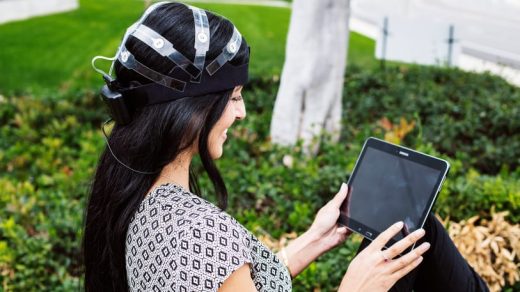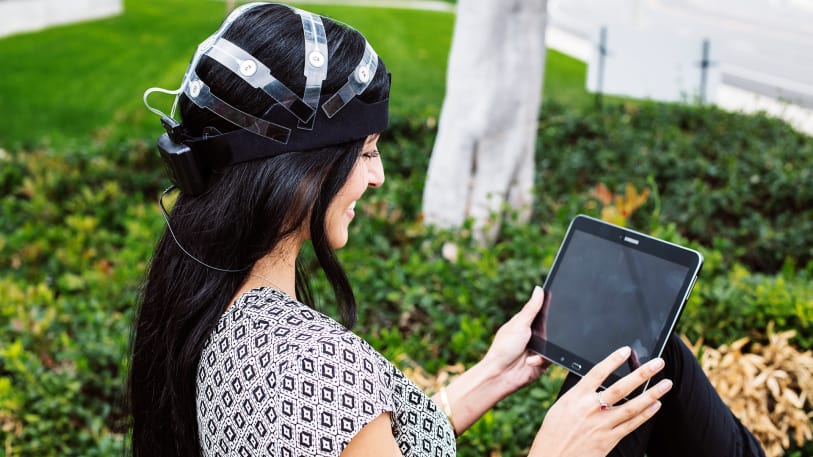Chris Berka’s Lifelong Quest To Make Consciousness Visible
The first time Chris Berka watched her brainwaves changing in front of her, it transformed her life.
Berka was a psychology major at Ohio State when she took a job in an Electroencephalography (EEG) lab. As part of her initiation, colleagues affixed a net of gel-covered electrodes directly to her scalp, ran wires through a coterie of computers, and began asking her questions. When they told her to close her eyes and relax, the patterns on the machine in front of her settled into a slow, steady series of symmetrical peaks and valleys. Then they asked her an embarrassing, personal question, and the magnitude and speed “went through the roof.” It was, Berka recalls, “a revelation to me on so many levels.”
Berka realized if someone could find a way to modify this technology, and make it more portable—back in the 1970s the equipment filled an entire room—it might be used to enhance performance and well-being, diagnose brain disease, perhaps even make us somehow smarter. The potential uses, it seemed to her, were virtually unlimited.
“It sounds simple, but if you think about the ability to look into your consciousness and see things that normally you’re not even consciously aware of, it’s a whole different level of perception,” she says. “If I could see it and I could change it—and see it change—then that meant I had some level of control over it. We’re all looking for ways to move into different states of consciousness. Suddenly it seemed possible.”
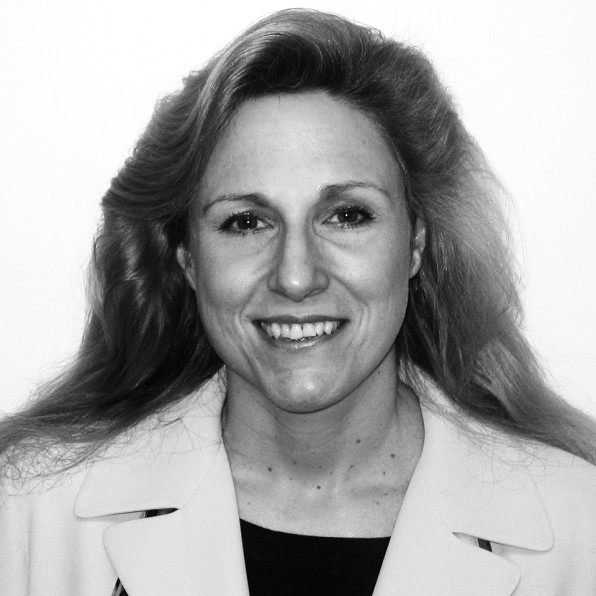
That distant vision is rapidly becoming a reality, thanks in part to the Carlsbad, California, company that Berka now runs, Advanced Brain Monitoring (ABM). EEG is now used to diagnose everything from epilepsy to sleep apnea. In 2015, the brain monitoring market was $7.5 billion. It is projected to grow at an annual compounded rate of 7%, to $11.5 billion in 2020, according to MarketsandMarkets. The U.S. market for EEG devices alone is expected to hit $1.4 billion by 2021.
In recent years, ABM, which was founded in 1999 and remains private, not only created one of the most compact, portable laboratory-grade EEG devices on the market, they have also played a key role in showing just how far we might push this technology—from curbing depression to training military snipers.
ABM’s most successful commercial products have come in the field of sleep science. ABM developed a compact EEG device coupled with a software package capable of detecting and monitoring the slow rhythmic brain oscillations associated with the various stages of sleep, and sensors that can monitor breathing. One version of the device, designed to help sleep clinics detect sleep apnea without requiring inpatient stays, was sold to Watermark Medical (now SleepMed), a company chaired by former Apple CEO John Sculley. It has now been run on more than 1.2 million patients.
In the early 2000s, ABM was a primary player in a $100 million effort called “Augmented Cognition,” funded by the Defense Advanced Research Program Agency (DARPA). The goal of the project sounds like science fiction—but also a lot like the vision Berka had in that lab all those years ago. It aimed to monitor cognitive brain states—like working memory and attention—and then use computers to enhance human mental performance beyond its normal boundaries.
“We went from ‘I have a thousand wires and I have to carry a laptop in my backpack in order to do this experiment,’” recalls former DARPA program administrator Amy Kruse, “to something that Chris and her team developed that was truly portable, wireless EEG with the signal quality that we needed to do these experiments.”
For Berka, a Buddhist-inspired meditator who looks years younger than her age (she’s 60), the path to her breakthrough began when she won a clinical fellowship in a well-funded lab at UCLA, where she worked to identify a neural signature of ADHD. When Ronald Reagan became president, the budget of the National Institute of Health was slashed, and the money Berka had been counting on to renew her fellowship suddenly vaporized.

Berka took what she thought would be a temporary gig helping to run clinical trials for a team of entrepreneurs commercializing a new way to detect drug use by analyzing hair samples. She was surprised to discover that she found the pace and challenges of private industry exhilarating. Berka worked for seven different CEOs over the next 12 years, learning a bit from each one. Then, one of her company’s biggest customers—the garbage hauling company Waste Management—said something that changed her life.
“You know Chris, we love your drug testing program.” Berka remembers a company official telling her. “But what we really need is a drowsiness assay, because drowsy driving is our biggest problem in terms of safety.”
Berka knew that EEG could easily detect when people were in the process of falling asleep. As we move from a normally aroused state or relaxed wakefulness into pre-sleep state, it’s possible to detect synchronized oscillations spreading through the brain, at a frequency known as the “theta band.”
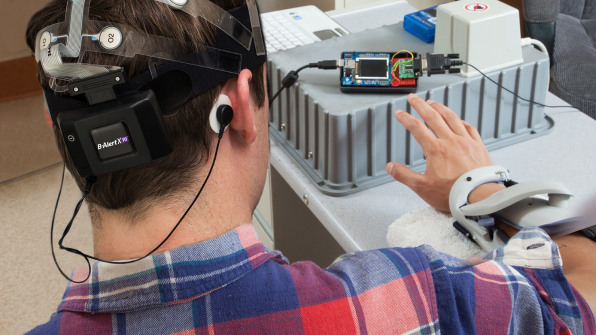
If she could find a way to miniaturize an EEG system, she would have a ready market, not just for truckers, but for airline pilots, heavy equipment operators, and many other professions where drowsiness was a danger. The time finally seemed right to pursue the vision she had that day in the Ohio State lab so many years earlier.
Berka put up $300,000 of the equity she’d earned when the drug testing company went public, recruited a software and hardware engineer to join her team, and then won a $3.1 million NIH small business grant. By 2005, ABM had not only figured out a way to detect fatigue in real time, but had developed a mobile, wireless system that could fit under a baseball cap.
That’s when the company hit a near-fatal roadblock. Although trucking companies enthusiastically embraced the idea of a machine to counter the scourge of driver fatigue, truckers themselves didn’t like the idea of allowing their bosses to monitor their brain waves. The union raised privacy concerns. Plus, for many of the truckers who suffered from sleep apnea, drowsiness was a constant; detecting it didn’t change anything. The product was dead before it got off the ground.
ABM scrambled for a new plan. Having recruited a sleep medicine pioneer, Dr. Philip Westbrook, to serve as the company’s chief science officer, the company decided to adapt their device to help detect and treat sleep apnea. Around that same time, a friend and colleague mentioned to Berka that DARPA was starting an Augmented Cognition program, and asked if she might be interested in participating.
That led ABM to a number of high-profile Pentagon-funded studies, including one on the brain states of expert snipers. Berka and her colleagues at DARPA wanted to know if you could tell whether someone was an expert at a task just by looking at their brain—and whether it might be possible to track the changes as someone progressed from a state of beginner to a state mastery, a project known as the Accelerated Learning Program or “Targeted Neuroplasticity Training.”
To find out, ABM recruited top-level Marine sniper instructors from nearby Camp Pendleton. Every time a volunteer arrived for testing, Berka and her team placed a 24-channel array of electrodes over his skull, wired him up to track respiration, heart response, and galvanic skin response, and then handed the volunteer a jury-rigged M4 rifle capable of taking precise measurements that included muzzle wobble and trigger squeeze. Then Berka and her team had the expert marksmen go through the process they normally went through before squeezing off a shot at a target and looked for interesting patterns in the data.
“What we found is that in the two to five seconds preceding a perfect shot, we saw the exact same psychophysiological profile,” Berka says.
Along with a slowing heart rate, followed by a long slow inhale, and then an exhale that coincided with the shot, there were two distinct EEG signatures. The first was an increase in what’s known as “midline theta” activity, a train of rhythmic wave forms in the theta range (four to 7 Hz0). Then came a bust “Alpha” activity over the left temporal-parietal region of the brain, a specific pattern of neural oscillation firing between frequencies of 7.5 and 12.5 Hz thought to be associated with synchronous activity.
The midline theta seemed to be a neural signature that reflected the sniper going through mental checklists, or visualizing the perfect shot. The increase in alpha activity, Berka notes, has been documented in a number of other laboratory settings and is well known signature of focused attention.
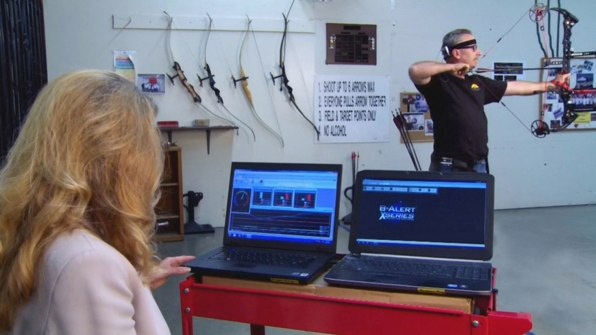
“So, you’re kind of shutting down the incoming sensory information, focusing just on the target and getting a perfect shot,” she says. “What was fascinating is not only did we see that in 13 coaches–shot-to-shot exactly the same pattern–but if we just had them sit in the room with all the gear on and imagine shooting, we saw exactly the same pattern.”
When asked, the subjects reported that they knew when they had reached the state of mind where they were going to take the perfect shot. Many told her that the state was accessible at will—and that they had learned how to access it over time as a byproduct of experience. It was, they said, “almost like a little switch.”
After identifying these neural signatures, Berka and her team recruited 150 civilians and 150 Marines with various levels of marksmanship skill, all non-expert. They developed a prototype video introduction to marksmanship to ensure consistency of training, and divided the volunteers into two groups. The control group was allowed to practice shooting on their own and view additional instructional videos. The experimental group was set up with EEG and heart rate monitors and provided with real-time feedback, showing when their heart rate and brain waves moved in and out of the ideal expert states.
“First we just trained people without the rifle to move as much as they could toward the expert state,” Berka says. “Then you leave the system on and now you pick up the rifle and you shoot.”
The results were dramatic: Those with the feedback learned to become master marksmen twice as fast. The feedback, she says, allows individual to recognize the “expert” brain state and learn to control it.

Since then, Berka has studied how the myriad brain states of teams begin to sync up as the individuals learn to work together; she has been involved in studies with PTSD; and is currently gearing up to participate in a Pentagon study of neural signatures that might indicate when an individual is prone to radicalization.
Converting military research into commercial products, however, has been challenging. While representatives from the Army Rangers and Marines say they are eager to buy the marksman training system, ABM must first go through a long bureaucratic military procurement process. ABM found a retired brigadier general to help get the product approved, but Berka has begun to wonder if it will happen before she retires.
In the meantime, Berka is pursuing medical applications for clinical trials and patient diagnostics, and is providing systems to a wide array of research institutions including Harvard, Mayo Clinic, University of California, San Diego, University of Washington, and many others. ABM also sells its EEG systems, and the software that interprets the signals, to thousands of clinicians and sleep clinics across the nation. The company offers the option of cloud-based services that allow clients to upload data and have board-certified physicians look at it.
Pharmaceutical applications are now the company’s fastest growing segment. They began working with Biogen three years ago, looking for EEG markers in Alzheimer’s, then branched out to Parkinson’s and frontotemporal dementia. In one large study with Harvard’s Martinos Center for medical imaging, they looked for EEG markers correlated with signatures of these conditions that can be detected with more powerful, far less portable brain scanning techniques, like MEG, fMRI, and PET. The team has found neural signatures that can indicate the presence of plaques associated with Alzheimer’s—a home run, because the radiation levels of traditional method of detection, PET, make it impractical for multiple uses. If this technique is commercialized it would provide a far cheaper and more practical alternative. Other pharmaceutical clients include Johnson & Johnson and Ionis.
Berka leads me on a tour of her offices, past treadmills and flight simulators, framed covers of Inc. magazine (AMB was on the Inc. 5000 list of the fastest-growing U.S. companies from 2010 to 2015), and desks filled with young and casually dressed employees, and into a temperature- and light-controlled sleep room. A number of sleep clinics and physicians send their patients home with ABM sleep profiler devices, and then either upload the data to the company or send in the machine for analysis.
Even after all these years, Berka still always comes back to that day in the lab and her passion for the technology itself. “Commercial companies, business, was just completely different from academia,” she says. “Everything moves really fast. That’s what I like about it.”
Adam Piore is an award-winning journalist based in New York. A former editor and correspondent for Newsweek, his narrative features have appeared in Conde Nast Traveler, GQ, Discover Magazine, Mother Jones, Playboy, Scientific American, the Atavist, BusinessWeek and many others.
Fast Company , Read Full Story
(42)

